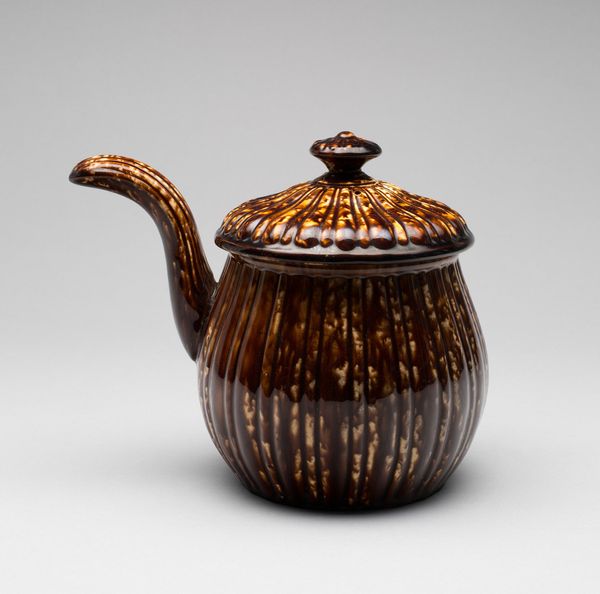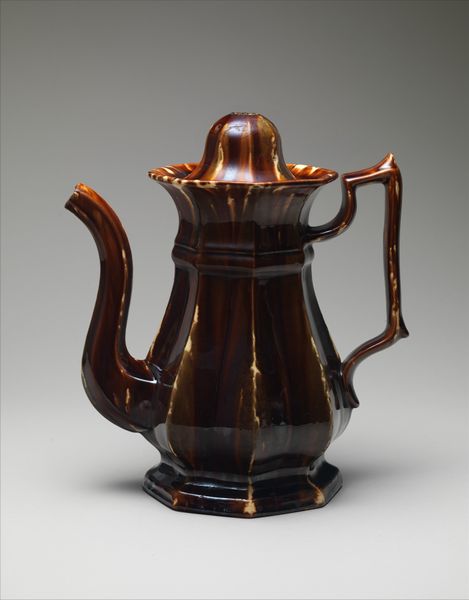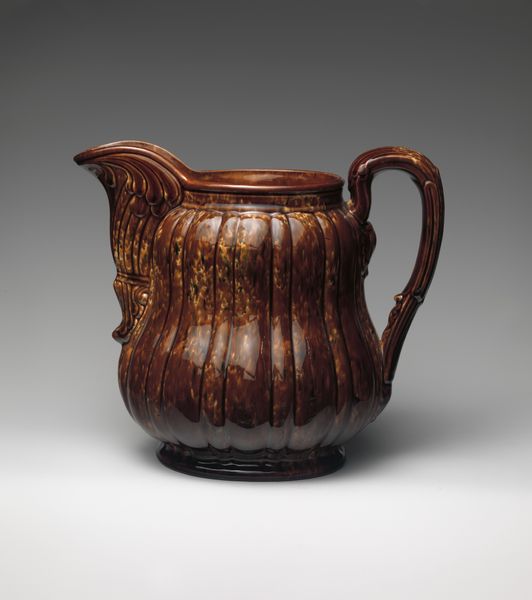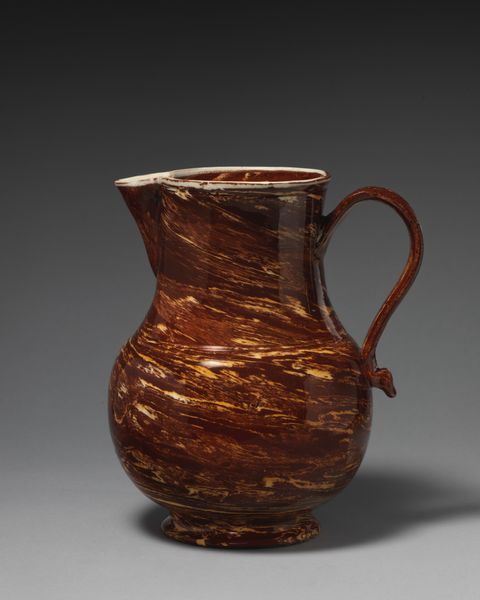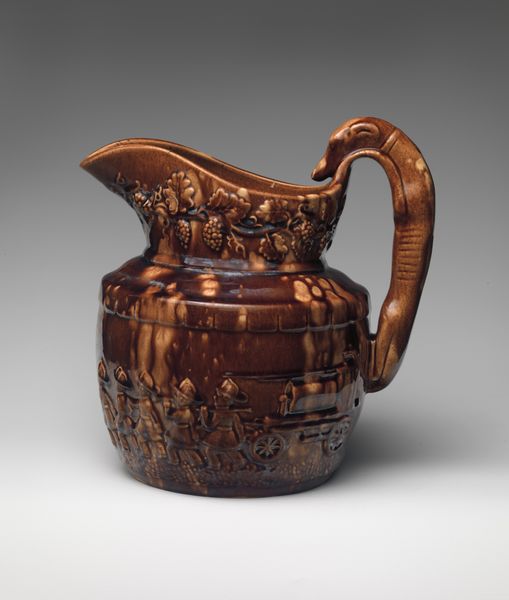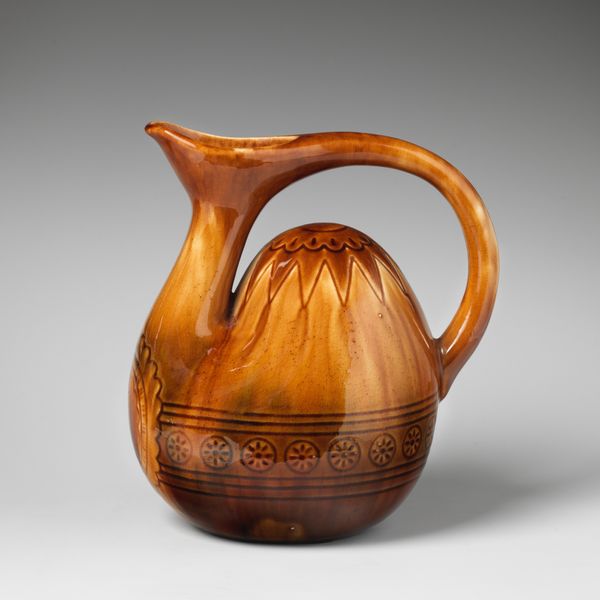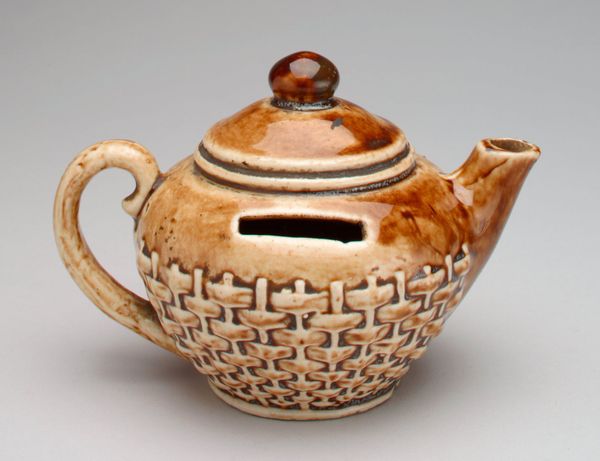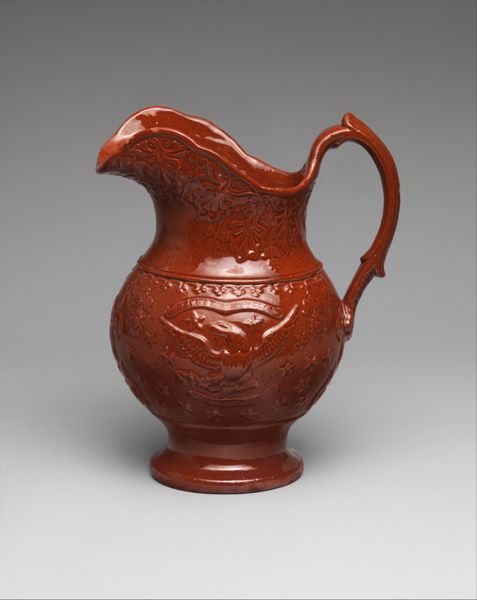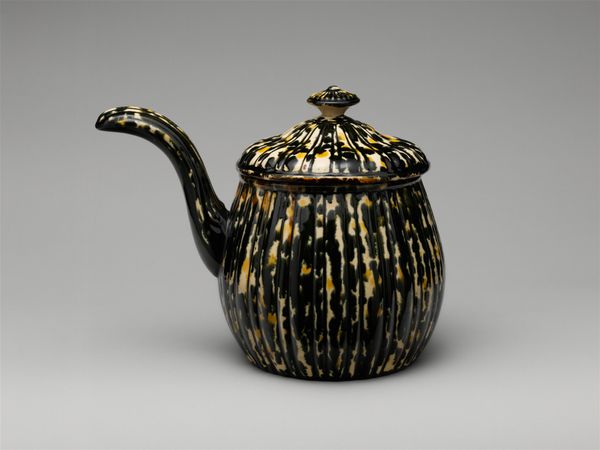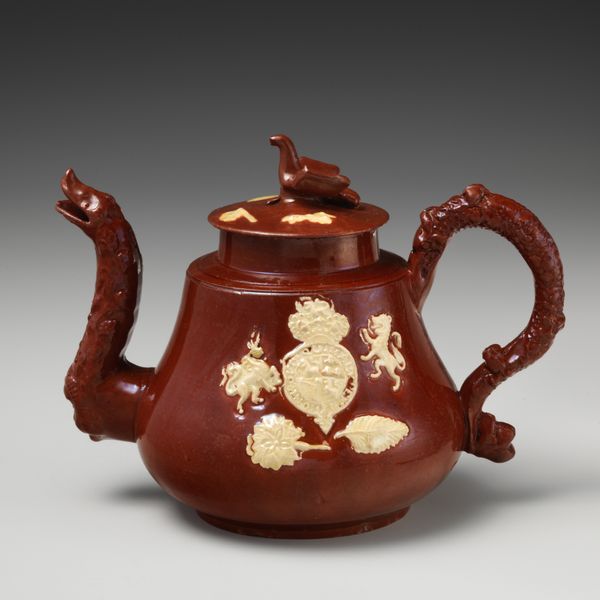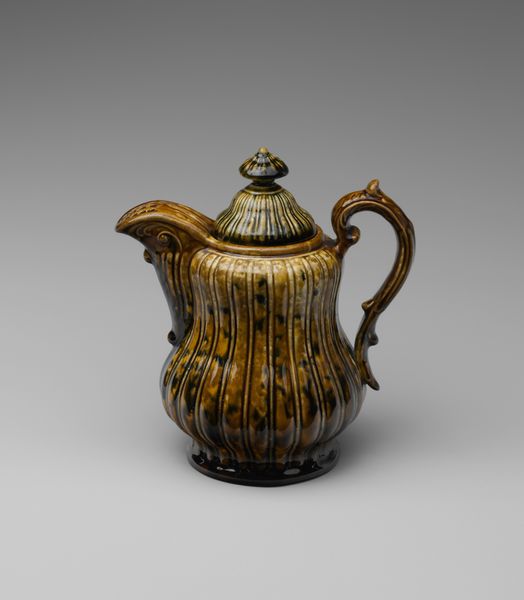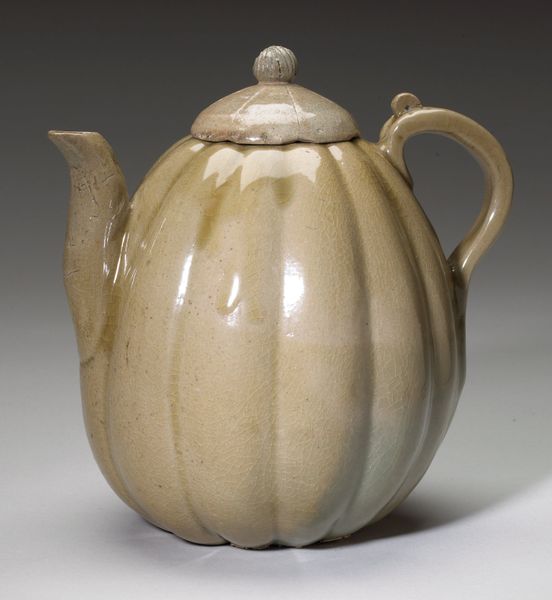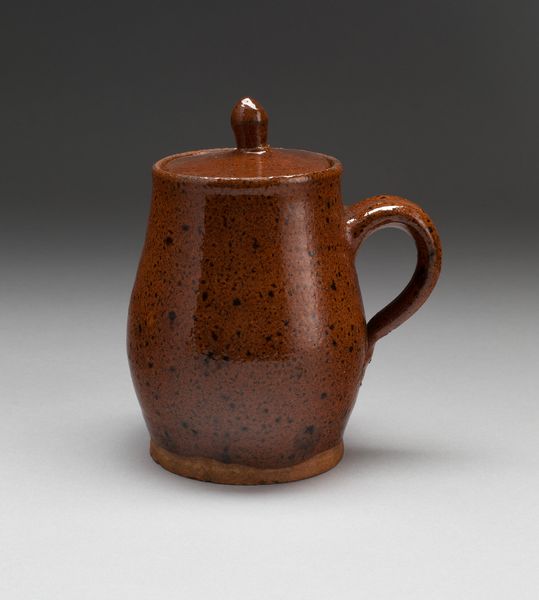
ceramic, photography, earthenware
#
ceramic
#
photography
#
earthenware
Dimensions: 8 3/4 in. (22.2 cm)
Copyright: Public Domain
Curator: Here we have a glazed earthenware "Covered Bean Pot" made by Lyman, Fenton & Co. Sometime between 1849 and 1858. It's currently held at The Metropolitan Museum of Art. What are your initial impressions? Editor: The dark glaze with the lighter flecks running down evokes a feeling of warmth, maybe because it reminds me of molasses or a rich stew. It also makes me think about labor – the labor involved in growing beans and the even longer labor of preparing and cooking them. Curator: That’s interesting. For me, the flecks create the sense of wood grain, imbuing the pot with a sort of primal connection to nature, reminding us that even a domestic object is ultimately from the earth. But the pot itself takes on another meaning with context: this dates to the antebellum period and must be understood in the wider scope of forced labor. Editor: Exactly! Something like this speaks to how enslaved cooks used their culinary expertise, their forced labor, to create not only sustenance, but also lasting cultural traditions, particularly in the realm of foodways. Was this a presentation piece, made for wealthier homes? Curator: It likely would have been commonplace. The specific shape—the rounded belly and cylindrical neck—suggest a practical use in hearth cooking and baking, a very archetypal domestic form, reaching back centuries in various cultural traditions. Though the form might appear ubiquitous, even neutral, such assumptions flatten history by sidelining racial power dynamics. Editor: And this dark, mottled glaze seems symbolic too, of the depths and secrets held within historical and cultural memory. A sealed vessel implies the safe-keeping of cherished things, traditions and stories. You're right to point that out! Even now, we see it on display at The Met as a vessel to hold something about our relationship with objects and how we frame the everyday and domestic. Curator: These kinds of objects connect us, despite vastly different life experiences, back to ancestral practices that gave birth to culture itself. Even with this beautiful piece we must remind ourselves that art is rarely simply itself and these pieces exist at the intersection of personal stories and public histories. Editor: Indeed. Objects like this offer lessons about acknowledging difficult histories, promoting critical dialogues. Curator: Lessons that may even taste like baked beans.
Comments
No comments
Be the first to comment and join the conversation on the ultimate creative platform.
